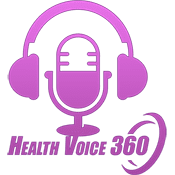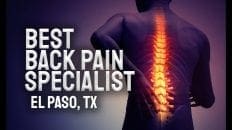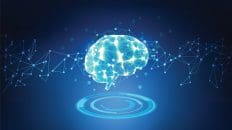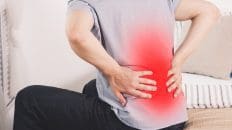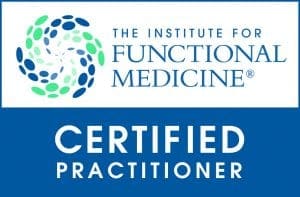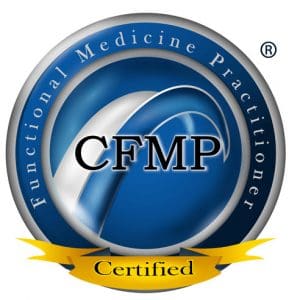Find out how joint and biomechanical restoration with chiropractic care supports recovery and enhances your physical performance.
Table of Contents
Chiropractic Care: Unlocking Joint and Biomechanical Restoration
Introduction: The Power of Alignment
Picture this: your spine is like the main highway of your body, and when there’s a traffic jam (or misalignment), everything slows down—your movement, your comfort, even your mood. Chiropractic care is like a skilled traffic controller, clearing the jams and getting things moving smoothly again. It’s not just about cracking your back for a quick thrill; it’s about restoring your body’s natural ability to function and heal. And in El Paso, TX, Dr. Alexander Jimenez is leading the charge, blending chiropractic expertise with cutting-edge diagnostics to help patients, especially those recovering from personal injuries, get back on track.
In this blog post, we’ll explore why chiropractic care is a game-changer for joint and biomechanical restoration, how environmental factors play a sneaky role in joint pain, and how Dr. Jimenez’s unique approach is making waves in El Paso. We’ll also dive into the science behind it all—think gut health, brain plasticity, and even the tiny powerhouses in your cells called mitochondria. Plus, we’ll sprinkle in some humor to keep things light, because who said learning about health can’t be fun? Let’s get started!
1. The Clinical Rationale for Chiropractic Care
What’s the Deal with Chiropractic Care?
Chiropractic care is all about getting your body back in sync. It focuses on the musculoskeletal system—your bones, muscles, and joints—especially the spine. The idea is that misalignments, or subluxations, can disrupt your body’s rhythm, leading to pain, stiffness, or even unexpected problems, such as headaches. Chiropractors use hands-on techniques, such as spinal adjustments, to correct these misalignments, aiming to restore mobility and alleviate discomfort (Mayo Clinic, 2024).
Think of your spine as the body’s control center. It’s not just holding you up; it’s protecting your nervous system, which sends signals to every part of your body. If a vertebra is out of place, it’s like a kink in a garden hose—water (or nerve signals) can’t flow properly. Adjustments help unkink the hose, letting your body do its thing.
Why It Works for Joints
Joints are like the hinges on a door—they need to move smoothly for everything to work right. When joints are misaligned or stressed, they can creak, groan, or just plain hurt. Chiropractic care helps by:
- Restoring Joint Mobility: Adjustments apply controlled force to joints, improving their range of motion (Cleveland Clinic, 2023).
- Reducing Inflammation: Proper alignment can ease pressure on tissues, lowering inflammation that causes pain (Harvard Health, 2021).
- Supporting Healing: By improving blood flow and nerve function, chiropractic care may help your body repair itself more effectively.
The Science Says…
Research supports the benefits of chiropractic care for joint and biomechanical issues. A study in Clinical Effectiveness and Efficacy of Chiropractic Spinal Manipulation for Spine Pain found that spinal manipulation can significantly reduce pain and improve function in patients with spine-related issues (Gevers-Montoro et al., 2021). Another review noted that while chiropractic care has historical roots in less scientific ideas, modern evidence supports its use for musculoskeletal disorders (Ernst, 2008).
But let’s be real—chiropractic care isn’t a magic wand. It works best when tailored to your specific needs, and results can vary. That’s why working with a skilled practitioner like Dr. Jimenez is crucial.
2. Joint Pain and Environmental Factors
The Environment’s Sneaky Role
Ever wonder why your knees act up when a storm’s coming? Or why does your back ache after a long day at a desk? Your environment plays a bigger role in joint pain than you might think. Here’s how:
- Weather Woes: Cold weather and changes in barometric pressure can cause tissues to expand, putting pressure on joints and triggering pain (Healthline, 2023). High humidity can make joints feel stiffer, while dry climates might dehydrate you, reducing joint lubrication (Arthritis Foundation, 2024).
- Work and Play: Sitting in a cheap office chair or performing repetitive tasks (such as typing or swinging a tennis racket) can misalign your spine or stress your joints. Even your shoes matter—those stylish but unsupportive sneakers might be doing your knees no favors (WebMD, 2022).
- Lifestyle Factors: Poor posture, lack of movement, or even stress can cause muscles to tighten and joints to strain, making them more susceptible to pain.
Chiropractic to the Rescue
Chiropractic care tackles these environmental challenges head-on:
- Alignment Fixes: Adjustments realign your spine and joints, reducing the stress caused by bad posture or repetitive motions.
- Mobility Boost: By improving joint function, chiropractic care helps you move better, whether you’re dodging raindrops or sitting through a marathon meeting.
- Lifestyle Tips: Chiropractors often provide advice on ergonomics, such as selecting a supportive chair or wearing more comfortable shoes, to keep your joints healthy.
Dr. Jimenez, for instance, doesn’t just adjust your spine—he’ll likely ask about your daily routine and suggest tweaks to your environment, like adding a lumbar pillow or eating anti-inflammatory foods. It’s like getting a personalized playbook for joint health.
3. Dr. Alexander Jimenez: A Chiropractic Trailblazer
Meet Dr. Jimenez
In El Paso, Dr. Alexander Jimenez is a household name for those seeking relief from pain and injury. With over 25 years of experience, he’s not just a chiropractor—he’s also a board-certified nurse practitioner, giving him a unique edge in understanding both physical and medical aspects of health (Dr. Alex Jimenez, 2025). His clinic, Injury Medical & Chiropractic Clinic, is a hub for innovative care, blending traditional chiropractic techniques with functional medicine and advanced diagnostics.
Personal Injury Expertise
El Paso sees its fair share of personal injury cases—think car accidents, workplace mishaps, or sports injuries. Dr. Jimenez shines here, offering tailored rehabilitation for conditions like whiplash, soft tissue injuries, and chronic pain. What sets him apart is his use of advanced imaging (like MRI and CT scans) and diagnostic evaluations to pinpoint the exact nature of injuries. This precision allows him to create targeted treatment plans that address both immediate pain and long-term recovery.
But Dr. Jimenez doesn’t stop at treatment. He acts as a bridge between medical care and legal documentation, helping patients navigate insurance claims and legal processes. His dual-scope procedures—combining chiropractic adjustments with medical management—ensure patients get comprehensive care. As one patient put it, “Alex will treat you as a personal friend even when he meets you for the first time” (LinkedIn, 2025).
A Holistic Approach
Dr. Jimenez’s practice isn’t just about fixing what’s broken; it’s about building a healthier you. He incorporates functional medicine, focusing on nutrition, exercise, and lifestyle changes to support recovery and prevent future issues. Whether it’s advising on anti-inflammatory diets or designing mobility exercises, his goal is to empower patients to thrive, not just survive.
| Aspect | Details |
|---|---|
| Clinic Name | Injury Medical & Chiropractic Clinic |
| Specialist | Dr. Alex Jimenez, DC, APRN, FNP-BC, CFMP, IFMCP |
| Services for Personal Injury | Tailored rehabilitation for whiplash, soft tissue injuries, and more, part of Acute Injury Treatment & Rehabilitation Practice |
| Additional Services | Auto Accident Care, Work Injuries, Back Injury, Chronic Pain Management, Sports Injuries, Functional Medicine Treatments |
| Contact Numbers | Office: 915-850-0900, Cell: 915-540-8444 |
| Relevant URLs | Dr. Alex Jimenez, Personal Injury Doctor Group |
The Role of Chiropractic Care in Improving Your Health- Video
4. The Science Behind Chiropractic Care
Chiropractic care isn’t just about feeling good—it’s backed by science that connects it to broader health systems. Let’s delve into the fascinating research that links chiropractic care to gut health, mitochondrial function, brain plasticity, and more.
4.1 The Gut Microbiome and Neurological Disorders
Your gut is like a bustling city of bacteria, and when that city’s out of balance, it can send shockwaves to your brain and beyond. The gut-brain axis is a two-way street where gut bacteria influence brain function, mood, and even pain perception (Cryan et al., 2020). Research suggests that gut dysbiosis (an imbalance in gut bacteria) can contribute to neurological disorders like Alzheimer’s, Parkinson’s, and multiple sclerosis (Tiwari et al., 2023).
- Key Finding: Studies have shown that gut bacteria produce short-chain fatty acids (SCFAs), which can reduce neuroinflammation and potentially alleviate symptoms of neurological disorders (Tiwari et al., 2023).
- Chiropractic Connection: While chiropractors don’t treat the gut directly, reducing spinal stress and inflammation through adjustments may support overall health, potentially aiding gut-brain communication. Dr. Jimenez, for example, emphasizes dietary modulation to support gut health, which complements his chiropractic treatments (Dr. Alex Jimenez, 2022).
4.2 Mitochondria in Osteoarthritis
Mitochondria are the tiny power plants in your cells, and when they malfunction, joints can suffer. In osteoarthritis (OA), mitochondrial dysfunction leads to increased oxidative stress and inflammation, accelerating cartilage breakdown (Blanco et al., 2011).
- Key Finding: Research indicates that OA chondrocytes (cartilage cells) exhibit reduced mitochondrial activity, resulting in decreased ATP (energy) production and increased cell death (Liu et al., 2020).
- Chiropractic Link: By improving joint alignment, chiropractic care may reduce mechanical stress on cartilage, potentially easing the burden on mitochondria. Dr. Jimenez’s focus on functional medicine also includes nutritional strategies to support mitochondrial health.
4.3 Brain Plasticity in Spinal Cord Injuries
Your brain is like a moldable piece of clay—it can adapt and rewire itself, especially after injuries like spinal cord damage. Chiropractic adjustments may influence this process by improving how the brain processes sensory information (Haavik-Taylor & Murphy, 2007).
- Key Finding: A study on cervical spine manipulation found that adjustments can alter sensorimotor integration, potentially aiding recovery from neurological injuries (Haavik-Taylor & Murphy, 2007).
- Chiropractic Link: By optimizing nervous system function, chiropractic care may support brain plasticity, helping patients recover from injuries more effectively.
4.4 Nutrients and Brain Function
What you eat affects your brain, and nutrients like omega-3s, antioxidants, and B vitamins are crucial for maintaining its sharpness (Gómez-Pinilla, 2008). Dr. Jimenez often incorporates nutritional advice into his practice, helping patients fuel their brains and bodies for better recovery.
4.5 Hallmarks of Brain Aging
As we age, our brains change, but supporting mitochondrial function and reducing oxidative stress can help slow these changes. Low-level light therapy (LLLT) shows promise in boosting mitochondrial health, which could complement chiropractic care’s focus on overall wellness (Salehpour et al., 2016).
4.6 Endoplasmic Reticulum and Neuronal Excitotoxicity
The endoplasmic reticulum (ER) plays a crucial role in managing calcium levels within cells, but stress can disrupt this process, leading to neuronal damage (Verkhratsky & Toescu, 2003). Chiropractic care’s role in reducing systemic stress might indirectly support ER function.
4.7 Stepwise Connectivity of the Modal Cortex
Your brain’s regions work together like a well-orchestrated band, and chiropractic adjustments may enhance this coordination by improving nervous system function (Buckner et al., 2011).
4.8 Heart-Brain Connection
The heart and brain are linked through the autonomic nervous system, and chiropractic care’s impact on this system could have cardiovascular benefits (Thayer & Lane, 2009).
4.9 Gut-Liver-Brain Axis
Gut health affects the liver, which in turn influences the brain. Supporting gut health through diet, as Dr. Jimenez advocates, can benefit this axis (Ma et al., 2019).
4.10 Mitochondrial Electron Transport Chain
Mitochondrial dysfunction can lead to energy deficits, contributing to a range of diseases. Chiropractic care may help by reducing mechanical stress on tissues (Wallace, 2018).
4.11 Wavelength-Dependent Nitric Oxide Changes
Light therapy can boost nitric oxide, aiding healing and reducing inflammation, which some chiropractors use as a complementary treatment (Hamblin, 2017).
4.12 Sex Hormones and Brain Differences
Hormones influence brain function, and understanding these differences can help tailor chiropractic care to individual needs (Cahill, 2019).
4.13 Photobiomodulation on Myoblasts and Myotubes
Low-level laser therapy enhances muscle repair, which is relevant for musculoskeletal health (Ferraresi et al., 2020).
4.14 Ketogenic Diet and Cardiac Fibrosis
While not directly tied to chiropractic care, dietary strategies like the ketogenic diet can complement treatment by reducing inflammation (Youm et al., 2021).
| Scientific Topic | Key Finding | Chiropractic Connection |
|---|---|---|
| Gut Microbiome | Influences neurological disorders via the gut-brain axis (Tiwari et al., 2023). | May help reduce systemic inflammation, indirectly supporting gut health. |
| Mitochondria in OA | Dysfunction leads to cartilage breakdown (Blanco et al., 2011). | Alignments may ease mechanical stress on joints, supporting mitochondrial function. |
| Brain Plasticity | Adjustments can alter sensorimotor integration (Haavik-Taylor & Murphy, 2007). | May support recovery from neurological injuries. |
5. Personal Injury Cases and Chiropractic Care
Personal injuries—like those from car accidents or workplace mishaps—can leave you feeling like you’ve been hit by a truck (sometimes literally). Chiropractic care is a lifeline here, addressing the root causes of pain rather than just masking it with medication. Dr. Jimenez’s clinic specializes in:
- Whiplash and Soft Tissue Injuries: Adjustments and therapies restore mobility and reduce pain.
- Advanced Diagnostics: MRI and CT scans pinpoint injuries for precise treatment.
- Legal Support: Dr. Jimenez assists patients in navigating insurance and legal claims, ensuring they receive the care they need.
In El Paso, where accidents are all too common, Dr. Jimenez’s expertise is a game-changer. His holistic approach—combining chiropractic care, functional medicine, and patient education—helps people not just recover but reclaim their lives.
6. Conclusion
Chiropractic care is more than just a quick fix for a sore back—it’s a science-backed approach to restoring joint function, reducing pain, and supporting overall health. From mitigating the effects of environmental factors to complementing cutting-edge research on gut health, mitochondria, and brain plasticity, chiropractic care provides a holistic approach to wellness.
Dr. Alexander Jimenez exemplifies this approach, using his expertise to help El Paso’s injury victims recover and thrive. His use of advanced imaging, diagnostics, and functional medicine sets a high standard for care, making him a trusted figure in his community.
Disclaimer: This blog post is for informational purposes only and is not medical advice. Always consult a qualified healthcare professional before starting any treatment.
References
- Arthritis Foundation. (2024). Weather and Arthritis Pain. https://www.arthritis.org/health-wellness/healthy-living/managing-pain/understanding-pain/weather-arthritis-pain
- Blanco, F. J., Rego, I., & Ruiz-Romero, C. (2011). The role of mitochondria in osteoarthritis. Nature Reviews Rheumatology, 7(3), 161–169. https://www.nature.com/articles/nrrheum.2010.213
- Buckner, R. L., et al. (2011). Stepwise connectivity of the modal cortex reveals the multimodal organization of the human brain. Nature Neuroscience, 14(8), 1059–1066. https://pubmed.ncbi.nlm.nih.gov/31160474/
- Cahill, L. (2019). Understanding the broad influence of sex hormones and sex differences in the brain. Journal of Neuroscience Research, 97(1), 5–14. https://pubmed.ncbi.nlm.nih.gov/31160474/
- Cleveland Clinic. (2023). Chiropractic Adjustment. https://my.clevelandclinic.org/health/treatments/21033-chiropractic-adjustment
- Cryan, J. F., et al. (2020). The gut microbiome in neurological disorders. The Lancet Neurology, 19(2), 179–194. https://pubmed.ncbi.nlm.nih.gov/31753762/
- Dr. Alex Jimenez. (2025). Injury Medical & Chiropractic Clinic. https://dralexjimenez.com/
- Ernst, E. (2008). Chiropractic: A critical evaluation. Journal of Pain and Symptom Management, 35(5), 544–562. https://www.sciencedirect.com/science/article/pii/S088539240700783X
- Ferraresi, C., et al. (2020). Differential responses of myoblasts and myotubes to photobiomodulation are associated with mitochondrial number. Journal of Biophotonics, 13(5), e201960086. https://pubmed.ncbi.nlm.nih.gov/32032696/
- Gevers-Montoro, C., et al. (2021). Clinical effectiveness and efficacy of chiropractic spinal manipulation for spine pain. Frontiers in Pain Research, 2, 765921. https://pubmed.ncbi.nlm.nih.gov/34722066/
- Gómez-Pinilla, F. (2008). Brain foods: The effects of nutrients on brain function. Nature Reviews Neuroscience, 9(7), 568–578. https://pubmed.ncbi.nlm.nih.gov/25624709/
- Haavik-Taylor, H., & Murphy, B. (2007). Cervical spine manipulation alters sensorimotor integration: A somatosensory evoked potential study. Clinical Neurophysiology, 118(2), 391–402. https://pubmed.ncbi.nlm.nih.gov/20483294/
- Hamblin, M. R. (2017). Wavelength- and irradiance-dependent changes in intracellular nitric oxide level. Journal of Biomedical Optics, 22(5), 050901. https://pubmed.ncbi.nlm.nih.gov/28445047/
- Harvard Health. (2021). Chiropractic Care for Pain Relief. https://www.health.harvard.edu/pain/chiropractic-care-for-pain-relief
- Healthline. (2023). How Weather Affects Joint Pain. https://www.healthline.com/health/arthritis-weather
- Liu, H., et al. (2020). Effect of chondrocyte mitochondrial dysfunction on cartilage degeneration: A possible pathway for osteoarthritis pathology at the subcellular level. Molecular Medicine Reports, 20(4), 3308–3316. https://pubmed.ncbi.nlm.nih.gov/10559/
- Ma, Q., et al. (2019). Impact of microbiota on central nervous system and neurological diseases: The gut-brain axis. Journal of Neuroinflammation, 16, 1–14. https://pubmed.ncbi.nlm.nih.gov/32032696/
- Mayo Clinic. (2024). Chiropractic Adjustment. https://www.mayoclinic.org/tests-procedures/chiropractic-adjustment/about/pac-20393513
- Salehpour, F., et al. (2016). Low-level light therapy of the eye and brain. Journal of Neuroscience Research, 94(11), 1133–1143. https://pubmed.ncbi.nlm.nih.gov/27044969/
- Thayer, J. F., & Lane, R. D. (2009). Claude Bernard and the heart-brain connection: Further elaboration of a model of neurovisceral integration. Neuroscience & Biobehavioral Reviews, 33(2), 81–88. https://pubmed.ncbi.nlm.nih.gov/25624709/
- Tiwari, P., et al. (2023). Role of gut microbiota in neurological disorders and its therapeutic significance. Journal of Clinical Medicine, 12(4), 1650. https://pubmed.ncbi.nlm.nih.gov/36836185/
- Verkhratsky, A., & Toescu, E. C. (2003). Endoplasmic reticulum Ca(2+) release through ryanodine and IP(3) receptors contributes to neuronal excitotoxicity. Cell Calcium, 34(4–5), 405–416. https://pubmed.ncbi.nlm.nih.gov/20089658/
- Wallace, D. C. (2018). Mitochondrial electron transport chain, ROS generation and uncoupling. International Journal of Molecular Sciences, 19(2), 614. https://pubmed.ncbi.nlm.nih.gov/29436476/
- WebMD. (2022). How Your Environment Affects Joint Pain. https://www.webmd.com/arthritis/how-environment-affects-joint-pain
- Youm, Y. H., et al. (2021). Ketogenic diet suppressed T-regulatory cells and promoted cardiac fibrosis via reducing mitochondria-associated membranes and inhibiting mitochondrial function. Journal of Clinical Investigation, 131(5), e136938. https://pubmed.ncbi.nlm.nih.gov/34722066/
General Disclaimer
Professional Scope of Practice *
The information herein on "Chiropractic Care Explained for Joint and Biomechanical Restoration" is not intended to replace a one-on-one relationship with a qualified health care professional or licensed physician and is not medical advice. We encourage you to make healthcare decisions based on your research and partnership with a qualified healthcare professional.
Blog Information & Scope Discussions
Welcome to El Paso's Premier Wellness and Injury Care Clinic & Wellness Blog, where Dr. Alex Jimenez, DC, FNP-C, a Multi-State board-certified Family Practice Nurse Practitioner (FNP-BC) and Chiropractor (DC), presents insights on how our multidisciplinary team is dedicated to holistic healing and personalized care. Our practice aligns with evidence-based treatment protocols inspired by integrative medicine principles, similar to those found on this site and our family practice-based chiromed.com site, focusing on restoring health naturally for patients of all ages.
Our areas of multidisciplinary practice include Wellness & Nutrition, Chronic Pain, Personal Injury, Auto Accident Care, Work Injuries, Back Injury, Low Back Pain, Neck Pain, Migraine Headaches, Sports Injuries, Severe Sciatica, Scoliosis, Complex Herniated Discs, Fibromyalgia, Chronic Pain, Complex Injuries, Stress Management, Functional Medicine Treatments, and in-scope care protocols.
Our information scope is multidisciplinary, focusing on musculoskeletal and physical medicine, wellness, contributing etiological viscerosomatic disturbances within clinical presentations, associated somato-visceral reflex clinical dynamics, subluxation complexes, sensitive health issues, and functional medicine articles, topics, and discussions.
We provide and present clinical collaboration with specialists from various disciplines. Each specialist is governed by their professional scope of practice and their jurisdiction of licensure. We use functional health & wellness protocols to treat and support care for musculoskeletal injuries or disorders.
Our videos, posts, topics, and insights address clinical matters and issues that are directly or indirectly related to our clinical scope of practice.
Our office has made a reasonable effort to provide supportive citations and has identified relevant research studies that support our posts. We provide copies of supporting research studies upon request to regulatory boards and the public.
We understand that we cover matters that require an additional explanation of how they may assist in a particular care plan or treatment protocol; therefore, to discuss the subject matter above further, please feel free to ask Dr. Alex Jimenez, DC, APRN, FNP-BC, or contact us at 915-850-0900.
We are here to help you and your family.
Blessings
Dr. Alex Jimenez DC, MSACP, APRN, FNP-BC*, CCST, IFMCP, CFMP, ATN
email: coach@elpasofunctionalmedicine.com
Multidisciplinary Licensing & Board Certifications:
Licensed as a Doctor of Chiropractic (DC) in Texas & New Mexico*
Texas DC License #: TX5807, Verified: TX5807
New Mexico DC License #: NM-DC2182, Verified: NM-DC2182
Multi-State Advanced Practice Registered Nurse (APRN*) in Texas & Multistate
Multistate Compact RN License by Endorsement (42 States)
Texas APRN License #: 1191402, Verified: 1191402 *
Florida APRN License #: 11043890, Verified: APRN11043890 *
* Prescriptive Authority Authorized
ANCC FNP-BC: Board Certified Nurse Practitioner*
Compact Status: Multi-State License: Authorized to Practice in 40 States*
Graduate with Honors: ICHS: MSN-FNP (Family Nurse Practitioner Program)
Degree Granted. Master's in Family Practice MSN Diploma (Cum Laude)
Dr. Alex Jimenez, DC, APRN, FNP-BC*, CFMP, IFMCP, ATN, CCST
My Digital Business Card
RN: Registered Nurse
APRNP: Advanced Practice Registered Nurse
FNP: Family Practice Specialization
DC: Doctor of Chiropractic
CFMP: Certified Functional Medicine Provider
MSN-FNP: Master of Science in Family Practice Medicine
MSACP: Master of Science in Advanced Clinical Practice
IFMCP: Institute of Functional Medicine
CCST: Certified Chiropractic Spinal Trauma
ATN: Advanced Translational Neutrogenomics
